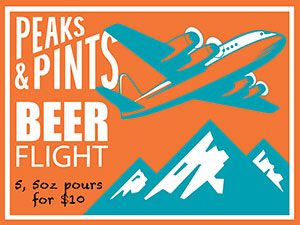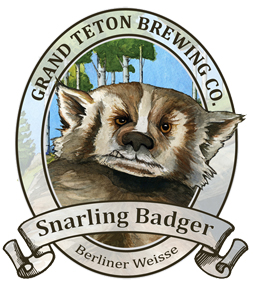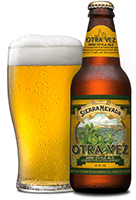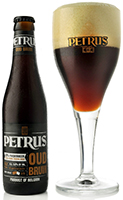 Sour beer styles are as old as beer brewing itself, yet they remained dormant in the craft world until several years ago. Today, brewers with an eye toward innovation have looked backward in time, adopting nearly-forgotten brewing practices. Not that all sour beers are boldly mouth puckering and expensive. Rather, they run the gamut of tart, tangy, acidic, pungent, affordable, and refreshing. When fruit is added to balance the flavor profile, the drinkability, in many cases, is enhanced. Sours get their trademark tartness and sourness from bacteria and wild yeasts — Lactobacillus, Acetobacter, Brettanomyces and other critters — which you wouldn’t find in other styles of beer. Each type of bacteria gives its own trademark flavor and aroma: Lactobacillus has a yogurt tang, Acetobacter has the sourness of vinegar, and Brettanomyces has a barnyard, earthy, or farmhouse aroma. For some of the sour styles, the wild bacteria and yeast come into the beer during an open or spontaneous fermentation, with open vats of wort exposed to the natural air. Other sour styles don’t use open fermentation, but they do rely on the bacteria and yeast in barrels to do a similar job. As the barrels get older, the more sour the beer gets, which leads to the common practice of blending beer from several different barrels, young and old, to get a consistent beer. Peaks and Pints offers a flight of five different kinds of sour beers today in what we call Craft Beer Crosscut 6.5.17: A Flight of Sour.
Sour beer styles are as old as beer brewing itself, yet they remained dormant in the craft world until several years ago. Today, brewers with an eye toward innovation have looked backward in time, adopting nearly-forgotten brewing practices. Not that all sour beers are boldly mouth puckering and expensive. Rather, they run the gamut of tart, tangy, acidic, pungent, affordable, and refreshing. When fruit is added to balance the flavor profile, the drinkability, in many cases, is enhanced. Sours get their trademark tartness and sourness from bacteria and wild yeasts — Lactobacillus, Acetobacter, Brettanomyces and other critters — which you wouldn’t find in other styles of beer. Each type of bacteria gives its own trademark flavor and aroma: Lactobacillus has a yogurt tang, Acetobacter has the sourness of vinegar, and Brettanomyces has a barnyard, earthy, or farmhouse aroma. For some of the sour styles, the wild bacteria and yeast come into the beer during an open or spontaneous fermentation, with open vats of wort exposed to the natural air. Other sour styles don’t use open fermentation, but they do rely on the bacteria and yeast in barrels to do a similar job. As the barrels get older, the more sour the beer gets, which leads to the common practice of blending beer from several different barrels, young and old, to get a consistent beer. Peaks and Pints offers a flight of five different kinds of sour beers today in what we call Craft Beer Crosscut 6.5.17: A Flight of Sour.
 Grand Teton Snarling Badger Berliner Weisse
Grand Teton Snarling Badger Berliner Weisse
7.5% ABV, 15 IBU
Berliner Weisse is a rare thing: a sour beer, intensely flavored and the embodiment of refreshment. Its tartness is generally mild. Its carbonation is high. It’s refreshing with soft, wheaty flavor. Grand Teton’s Snarling Badger Berliner Weisse drinks exceptionally light for its hefty 7.5 percent ABV. According to Snarling Badger hype, Grant Teton Brewmaster Rob Mullin wanted to brew “a beer that’s refreshing and drinkable, but that will also lay down and improve with age.” The first sip offers a big wheat taste up front that sours instantly. The funkiness of the lactobacillus snarls from start to finish. Huge lemon and pineapple notes color a sharp, tart mouthfeel and, combined with the solid wheat backbone, culminate in a playfully engaging taste.
 Sierra Nevada Otra Vez
Sierra Nevada Otra Vez
4.5% ABV, 5 IBU
Gose is a top-fermented beer that originated in Goslar, Germany. It is brewed with at least 50 percent of the grain bill being malted wheat. Gose belongs to the same family of sour wheat beers, which were once brewed across Northern Germany and the Low Countries. Sierra Nevada’s year-round gose took more than 100 iterations before deciding on the final formula, and it took a “beautiful accident” for the brewers to get it just right. The brewers tried dozens of different strains of lactobacillus bacteria before they stumbled on a novel strain that had accidentally infected a yeast sample. Otra Vez is flavored with prickly pears and grapefruit for a light and tart brew.
 Lindemans Kriek
Lindemans Kriek
3.5% ABV
Lambics are sharp, acidic, and fruity. They can be compared to yogurt or vinegar but with hints of sweetness. There are also several sub-styles of lambics. Lindemans has been brewing lambic since 1811. They were the first to introduce lambics to the American market (in 1979) and have remained the most popular brand. While they also make a peach, raspberry and pear lambic, the cherry is their most traditional flavor. Whole fresh cherries are added to the casks, triggering a third fermentation and promoting a spritz-y carbonation that gives the finished beer a champagne-like character with excellent mouthfeel. The flavor is akin to a natural black cherry soda, having a dark sweetness with only a flash of malty bitterness.
 Rodenbach Grand Cru
Rodenbach Grand Cru
6% ABV, 35 IBU
Flanders red ale is a style of sour ale brewed in West Flanders, Belgium. Flanders red ale is aged in oak barrels with Lactobacillus and Brettanomyces that add yogurt tang and barnyard notes and Acetobacter, which is the bacteria that creates vinegar. Consequently, Flanders red ales have sharp acidic, vinegar notes. Coming out of west Flanders is the World Beer Cup gold medal-winning Rodenbach Grand Cru, a blend of “young” beer (33%) and an older beer (67%) that has matured in oak vats. It is the high percentage of the older ripened-in-oak beer that gives it the complex and intense bouquet with a very long aftertaste like a Grand Cru wine. The late Michael Jackson bestowed upon this beer the titles of “World Classic” and “the Burgundy of Belgium.”
 Petrus Oud Bruin
Petrus Oud Bruin
5.5% ABV, 17 IBU
Oud bruins are similar to Flanders red ales, but tend to be a bit less tart, with additional darker fruit flavors such as figs, raisins or prunes. The malt is darker than the Flanders red ale and should taste of caramel, toffee, or chocolate. Like the red ale, Flanders brown ales are sour, but should not be acetic or vinegary. Petrus Oud Bruin’s flavor is simple and not jarring, particularly appealing to those making a first sojourn in this style: There’s a rush of syrupy cherry sweetness, followed quickly by soft acidic sourness and woody oak notes like those in red wine. Oud Bruin finishes remarkably dry, with a tart quality that lasts well into the aftertaste.
